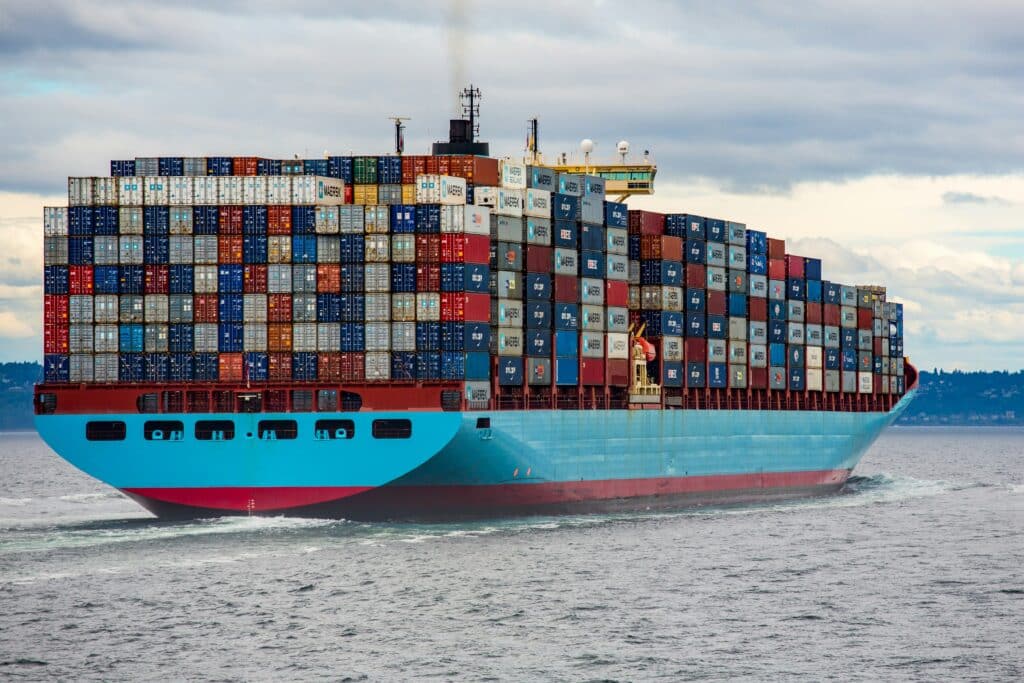
The international shipping industry is charting a new course: In a landmark move, member states of the International Maritime Organization (IMO) have agreed to the sector’s first binding global measures to cut greenhouse gas (GHG) emissions. The IMO Net-Zero Framework, set to be formally adopted in October, not only introduces mandatory emission reduction targets but also establishes a global carbon pricing mechanism – the first of its kind for any global sector. The agreement sends a strong signal that fossil fuels are no longer the long-term fuel option, and points towards e-fuels instead.
The Intersessional Working Group on GHG Reduction proposed the new framework outlining mid-term measures to achieve net-zero GHG emissions from international shipping by or around 2050, aligning them with the 2023 IMO Strategy on Reduction of GHG Emissions from Ships. Deviating from the previously proposed flatrate GHG levy, the Framework introduces a tiered GHG fuel intensity standard combined with a compliance unit trading scheme. While intended as a discussion proposal, the new text quickly dominated the agenda of the 83rd Session of the Marine Environment Protection Committee (MEPC83), sidelining alternative approaches, especially the universal carbon levy championed by Pacific Island States and over 50 supporting countries.
Despite initial controversy, IMO member states agreed on binding mid-term measures, set to take effect in 2027 for ships over 5,000 gross tonnage, covering approximately 85% of global shipping emissions. Central to the agreement are two main pillars:
Additionally, the framework defines a threshold for “zero or near-zero” fuels: 19 gCO₂e/MJ initially, tightening to 14 gCO₂e/MJ by 2035 – thereby promoting the use of e-fuels and discouraging reliance on fossil-based alternatives.
Revenues from the compliance credit market will go into the new IMO Net-Zero Fund, designed to reward low-carbon innovation and support developing countries with training, infrastructure, and technology transfer. However, some experts warn the generated revenues might not be enough to simultaneously fund technological innovation and a just energy transition in the Global South.
Although the final package passed with 63 countries in favor and 16 opposing, it has not been without controversy. Amongst others, analysts from the Global Maritime Forum (GMF) and University College London (UCL) argue that the fuel intensity targets and revenue levels may fall short of driving rapid deployment of scalable e-fuels or catalysing the infrastructure investments required. The complex framework shifts a large part of the financial risk to private actors, potentially delaying innovation and uptake.
Despite these challenges, the agreement sends a strong signal: fossil fuels are on a countdown in the maritime sector. The framework is designed to push them into minority use within the next 15 years, offering clarity for shipbuilders and fleet owners that e-fuels are the most viable long-term energy solution.
Importantly, the IMO deal stands as a rare example of successful multilateralism amid a fragmented geopolitical landscape nowadays. While key decisions, such as revenue allocation and emissions accounting, are still pending and details are expected to be further defined in intersessional working groups before the framework’s formal adoption in October 2025, the foundation is now laid. The next two years will be crucial in translating ambition into real-world impact.
The International PtX Hub is part of the International Climate Initiative (IKI) and is implemented by the Deutsche Gesellschaft für Internationale Zusammenarbeit (GIZ) GmbH on behalf of the German Federal Ministry for Economic Affairs and Climate Action (BMWK).
 ©Ian Taylor, Source: Unsplash
©Ian Taylor, Source: Unsplash

Anna Jakobsen
anna.jakobsen@giz.de

Antonia Schiller

Philipp Wittrock
philipp.wittrock@giz.de
Visit profile